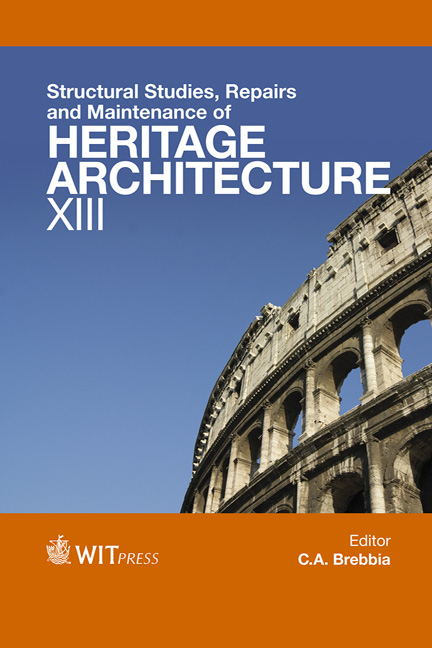Heritage Architecture From The Colonización Antioqueña: The Case Of The Santamaría Theater
Price
Free (open access)
Transaction
Volume
131
Pages
12
Page Range
445 - 456
Published
2013
Size
1,623 kb
Paper DOI
10.2495/STR130371
Copyright
WIT Press
Author(s)
J. C. Ochoa & H. H. Carvajal
Abstract
The Colonización Antioqueña was an internal migratory movement which had serious social and economic consequences for Colombia. It also strengthened many cultural expressions of the eastern part of the Country. Local, traditional and popular construction methods easily spread through what is now the countryside of Colombia’s Coffee Region. Even though this architecture has not been recognized as a significant part of the Country’s cultural heritage, as this designation is usually given to monumental architecture, it is still an undeniably valuable part of the cultural landscape and a contribution to Colombia’s historiography. The Santamaría Theater in the town of Jericó is a building that was originally constructed using earth and wood, with the rammed earth and wattle and daub techniques being prevalent at the time. In later years there were some structural and ornamental additions in the republican style, in which materials such as concrete and zinc were mixed. The municipality recognizes that the Santamaría Theater represents a cultural and historical point of reference for Antioquia (one of Colombia’s departments), and is itself a stage that characterizes the culture of Jericó. As a result, it was declared an Asset of Cultural Interest on November 25, 2008. The building has seen various interventions, the last of which was carried out between 2011 and 2012. The aim of this intervention was to revitalize the space with equipment befitting any modern theater, and in particular to foster music, theater and dance-related cultural activities. This article presents the history and description of the building while emphasizing the ground systems employed and the rehabilitation
Keywords
earth construction, rammed earth, wattle and daub, built heritage reuse, heritage conservation, adaptative reuse, cultural heritage, earth plaster, earth vernacular architecture




